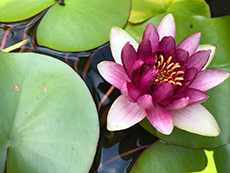



 Dynamic Meditation focuses on developing mindfullness - mind and body coordination: a calm relaxed state that can be maintained in action and at rest. Dynamic Meditation is also known as Japanese Yoga and Ki Development. In Japan it is called Shin-Shin Toitsu Do - The Way of Mind/Body Oneness. This practice originated with Tempu Nakamura, who traveled to the Himalayas in 1916, where he spent 3 years training. When he returned to Japan he started teaching what he had learned, from a distinctively Japanese perspective. There are influences from Zen, Shinto and martial arts practices.
Dynamic Meditation focuses on developing mindfullness - mind and body coordination: a calm relaxed state that can be maintained in action and at rest. Dynamic Meditation is also known as Japanese Yoga and Ki Development. In Japan it is called Shin-Shin Toitsu Do - The Way of Mind/Body Oneness. This practice originated with Tempu Nakamura, who traveled to the Himalayas in 1916, where he spent 3 years training. When he returned to Japan he started teaching what he had learned, from a distinctively Japanese perspective. There are influences from Zen, Shinto and martial arts practices.
Koichi Tohei, the foremost teacher of Shin-Shin Toitsu Do, developed Nakamura's teaching methods further. He is known for integrating these teaching methods into the practice of Ki Aikido.
Shinichi Tohei is the President and Chief Instructor of the Ki Society. He is a dedicated, life-long student of his father, Ki Society founder Koichi Tohei. He presides at Ki Society HQ in Japan, in charge of teaching, training and the organization in Japan and internationally. Under his dynamic leadership, the Ki Society has grown dramatically.
This Japanese Yogo practice is very compatible with and Martial Arts training.
This mindulness practice includes a detailed training in the following areas of:
Dynamic Meditation uses visualization techniques, meditation, breathing, stretching, and movement to teach how mind and body are connected and interactive. The training works with the premise that the mind leads the body. Practice develops confidence and discipline, which leads to greater relaxation and physical stability. A light push is often used to test the stability of students in various postures and movements. This “ki test” provides a form of biofeedback, revealing the quality and depth of physical relaxation and mental calmness. Each test helps students cultivate a reliable relaxation response that can be called upon in daily life. Our training uses posture and movement to affect a more positive mental state, while at the same time showing how a positive outlook improves posture and movement.